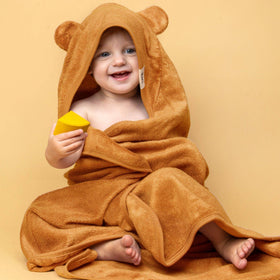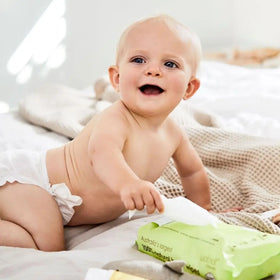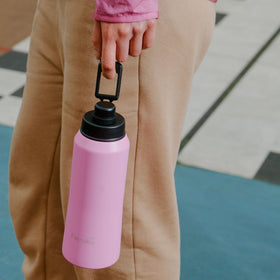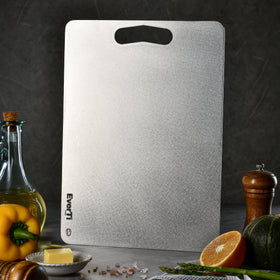
Eco-Friendly Foundations: Embracing Sustainability in Early Childhood Learning Centres with Eco Nappies
In today's world, where sustainability is more important than ever, early learning centres play a vital and empowering role in shaping the values and habits of future generations. By adopting eco-friendly and locally relevant sustainable practices, these centres have the unique opportunity to cultivate a sense of environmental responsibility in young children.
Raising The Bar: National Quality Framework and Sustainable Learning Environments
The National Quality Framework (NQF) plays a pivotal role in promoting and embedding sustainable practices in every early learning centre in Australia. It sets a national quality standard in early childhood education and underscores sustainability, particularly in Quality Area 3: Physical Environment. This area emphasises the creation of safe, engaging, and sustainable physical environments. Complementing this is the Early Years Learning Framework (EYLF), which underscores the importance of connecting children with their environment, helping them develop a deep sense of responsibility for the world around them.
The Australian Children's Education & Care Quality Authority (ACECQA) also plays a crucial role by overseeing the NQF's implementation and offering practical resources to help early learning centres integrate sustainability into their daily practices. These frameworks collectively support the creation of learning environments that educate young minds about the importance of environmental care and model sustainability practices.
Eco Nappies: A Simple Step Towards a Sustainable Future
One simple yet impactful way to promote sustainability in early childhood education is by using eco-friendly disposable nappies. By choosing these nappies, centres can help reduce their environmental footprint and contribute to healthier beginnings for children. As these young minds grow, the eco-conscious habits formed early on can lead to a hopeful and optimistic future, with a lifelong commitment to protecting our planet.

A Mountain of Waste: The Hidden Cost of Traditional Disposable Nappies
Understanding the Problem
Disposable nappies, a staple of modern parenting, are causing a profound and troubling environmental impact that will be felt for generations. Around 3.75 million of these nappies are discarded daily in Australia, adding to a mounting waste problem that could take centuries to resolve. Composed primarily of plastic-based materials, these nappies can decompose for up to 500 years. As they break down, they release harmful substances into the soil and water, contributing to long-term environmental pollution. The sheer volume of waste generated by disposable nappies is staggering, creating an urgent need for more sustainable solutions.
Protecting Children's Health: The Risks of Conventional Nappies
Disposable nappies have a significant environmental impact and can also pose health risks. These often contain toxic chemicals like chlorine, phthalates, and synthetic fragrances, which can irritate a baby's sensitive skin, leading to rashes, allergic reactions, and more severe skin conditions.
There is a growing concern about the potential long-term health effects of these chemicals. Some studies suggest they may disrupt hormone levels and contribute to other serious health issues. This underscores the importance of parents seeking safer, more eco-friendly alternatives for their babies. This shift towards safer and more sustainable and eco-friendly nappy options is crucial for creating a healthier environment in early childhood settings.
Why Eco Disposable Nappies Are the Future
Eco Nappies Are the Smart Choice for Sustainability
Thanks to their commitment to environmental sustainability, eco-disposable nappies are rapidly emerging as the future of nappying. Unlike traditional nappies, which often contain harmful chemicals, eco nappies are typically and substantially made from biodegradable materials like bamboo, plant-based fibres, and other sustainably sourced ingredients/materials. Brands like Bambo Nature, for example, use FSC-certified wood pulp, and their nappies are free from chlorine, phthalates, and artificial fragrances. This conscientious approach plays a significant role in reducing the environmental footprint, making these nappies a responsible choice for parents.

Environmental Benefits: Reducing Waste, Protecting the Planet!
While eco-friendly nappies may not be entirely biodegradable or compostable, they represent a significant step towards reducing environmental impact. Unlike their traditional counterparts, these nappies use bio-based materials such as FSC-certified wood pulp fluff while maintaining essential non-degradable components that ensure their effectiveness and comfort. What sets these eco nappies apart is their ability to decompose faster than traditional disposables—sometimes within just a few years rather than centuries. This means they break down more quickly in landfills, minimising their environmental footprint.
Brands like Bambo Nature are leading the way in showcasing how eco-friendly nappies can have a positive impact. They are committed to sustainability in every step of their manufacturing process, from using FSC-certified wood fibres to ensuring their products meet the highest environmental standards, such as the Nordic Swan Ecolabel and EU Ecolabel. This company holds ISO certifications for environmental and energy management and is also SMETA certified, ensuring adherence to human rights and fair labour practices.

The nappies are produced in a factory powered entirely by renewable electricity, demonstrating responsible production. Additionally, over 80% of their products carry an ecolabel, and in 2021, 87.7% of their production waste was recycled, showing that sustainability and social responsibility can go hand in hand.
Caring for Children and the Earth: The Health Benefits of Eco Nappies
Environmental sustainability in childcare is increasingly essential, and eco disposable nappies, like those from Bambo Nature, are changing the game. These nappies are made from hypoallergenic, natural materials, reducing the risk of skin irritation and nappy rash while ensuring the safety and well-being of children. Bambo Nature's products are certified by the Asthma Allergy Nordic and Oeko-Tex, confirming that they are free from harmful substances and allergens, making them safe for sensitive skin. These certifications reassure parents, caregivers, and early childhood educators that these nappies are eco-friendly and safe for children.
Embed Sustainable Practices: Why Eco Disposable Nappies Are Needed in Early Childhood Centres Despite Reusable Options
Striking the Balance: Practicality and Sustainability in Childcare
When it comes to sustainable practices in child care centres, the choice between reusable and disposable nappies often sparks debate. While cloth nappies offer a long-term environmental benefit by reducing waste, their practicality in early learning centres can be challenging. Managing the washing, drying, and sanitising of many reusable nappies can be time-consuming and resource-intensive, especially for centres with limited staff or space.
This is where eco-disposable nappies can make a significant difference. These innovative nappies provide a sustainable alternative by helping reduce the environmental impact of traditional disposable nappies. They offer a disposable nappy's convenience and hygiene benefits without compromising sustainability goals. By incorporating eco-disposable nappies into their operations, sustainable ELCs can demonstrate a commitment to environmental responsibility while ensuring the well-being of the children in their care.

Meeting Diverse Needs In A Sustainable Preschool
Eco-friendly disposable nappies make a significant difference for early childhood centres. They support sustainable development goals and meet the diverse needs of families, addressing social and economic aspects. Unlike reusable nappies, which require consistent washing and drying, eco-friendly disposables offer a practical and convenient solution for parents and caregivers with time constraints, resource limitations, or lack of suitable facilities. By providing this option, centres can ensure inclusivity and convenience without compromising their ecological commitment. This approach, grounded in environmental education, supports a practical and adaptable path towards sustainability in early childcare.
Implementing Eco Disposable Nappies in Early Learning Centres
How To Get Started
Embedding sustainable practices in early childhood learning centres can begin with a simple yet impactful change: transitioning to eco disposable nappies. To get started, centres should research different brands to find ones that meet their needs in terms of absorbency, comfort, and affordability. For example, Hello Charlie recommends Bambo Nature for its eco-friendly benefits, while Muumi and Moltex offer other options to suit different needs and budgets.
It's also important to educate staff and parents about the importance of this transition and how it aligns with the centre's broader sustainability goals. This can be done through workshops or informational sessions. By empowering them to make informed choices and promoting environmental awareness, early learning centres can make significant progress toward more sustainable practices.
Responsible Storage and Disposal
Implementing eco-friendly disposable nappies in early learning centres shows a commitment to the environment and brings an added layer of responsibility and care. Proper storage is necessary for maintaining hygiene. ELCs can use sealed, biodegradable nappy bags and bins with tight-fitting lids to prevent odours and contamination.
In addition to proper storage, focusing on responsible disposal is essential. Early learning centres should consider partnering with waste management services that compost biodegradable nappies. This partnership can significantly minimise environmental harm by ensuring that nappies are disposed of sustainably.
Engaging Parents and Caregivers in the Sustainability Journey
Encouraging the use of eco-friendly disposable nappies in early learning centres also involves getting parents on board. To make this effort successful, centres can give samples of eco-friendly nappies and recommend reliable brands to families. It's also important to keep parents informed by regularly updating them on the ELC's progress and the positive environmental impact of using eco-friendly nappies. By keeping everyone in the loop and involved, early learning centres and parents can work together to create a more sustainable future.
Additional Eco-Friendly Practices for a Sustainable Learning Environment
Energy and Water Conservation
Introducing sustainable practices in childcare is not just about environmental responsibility, but also about making smart financial decisions. By implementing energy and water conservation strategies, early learning centres can significantly reduce their operational costs. Using natural light, energy-efficient appliances, and low-flow faucets can lead to substantial savings. Moreover, when you teach children about these practices, these can help them develop lifelong habits that protect the environment. These practices not only create a responsible learning environment today but also ensure a mindful and sustainable future.
Waste Reduction and Recycling
Early learning centres can adopt eco-friendly practices such as waste reduction and recycling to foster a more sustainable learning environment. By implementing comprehensive recycling programs and using reusable items like water bottles and lunch containers, these centres can significantly cut down on waste.

Additionally, introducing composting for organic waste, like food scraps, provides a hands-on way for children to learn about the natural decomposition cycle and its positive environmental impact. These practices reduce the ecological footprint and instil lifelong sustainability habits in young learners.

Green Cleaning Products
Another area where we can significantly make an impact is our cleaning routines. Switching to non-toxic, biodegradable cleaning products can reduce an ELC's chemical footprint and create a safer, healthier space for our children. Importantly, these products are just as effective as traditional cleaners, providing the same level of cleanliness without harmful chemicals.
Sustainable Play and Learning Materials
Integrating sustainable play and learning materials into the educational space is essential to foster a genuinely eco-friendly learning environment. By selecting toys, furniture, and art supplies crafted from recycled or sustainably sourced materials, centres can support imaginative play and instil a deep appreciation for sustainability in young minds. These thoughtful choices reinforce the value of environmental stewardship and demonstrate how everyday items can contribute to a greener planet. This creates a space where creativity and ecological responsibility go hand in hand.
A Sustainable Future Starts Here
Adopting a sustainable practice in early childhood settings is crucial for our planet's future. Integrating eco-friendly solutions such as disposable nappies and other green practices into early learning centres can significantly reduce our environmental footprint and instil valuable ecological habits in young learners. These small yet impactful changes pave the way for a healthier environment and foster a culture of sustainability among future generations.
Join the movement by switching to eco-friendly disposable nappies and adopting other sustainable practices at your early learning centre. Hello Charlie supports these eco-friendly choices by offering sustainable products that align with your commitment to a greener future. Share this article to raise awareness and motivate others to make these important changes. Let's collaborate to create a greener, healthier world for future generations.










